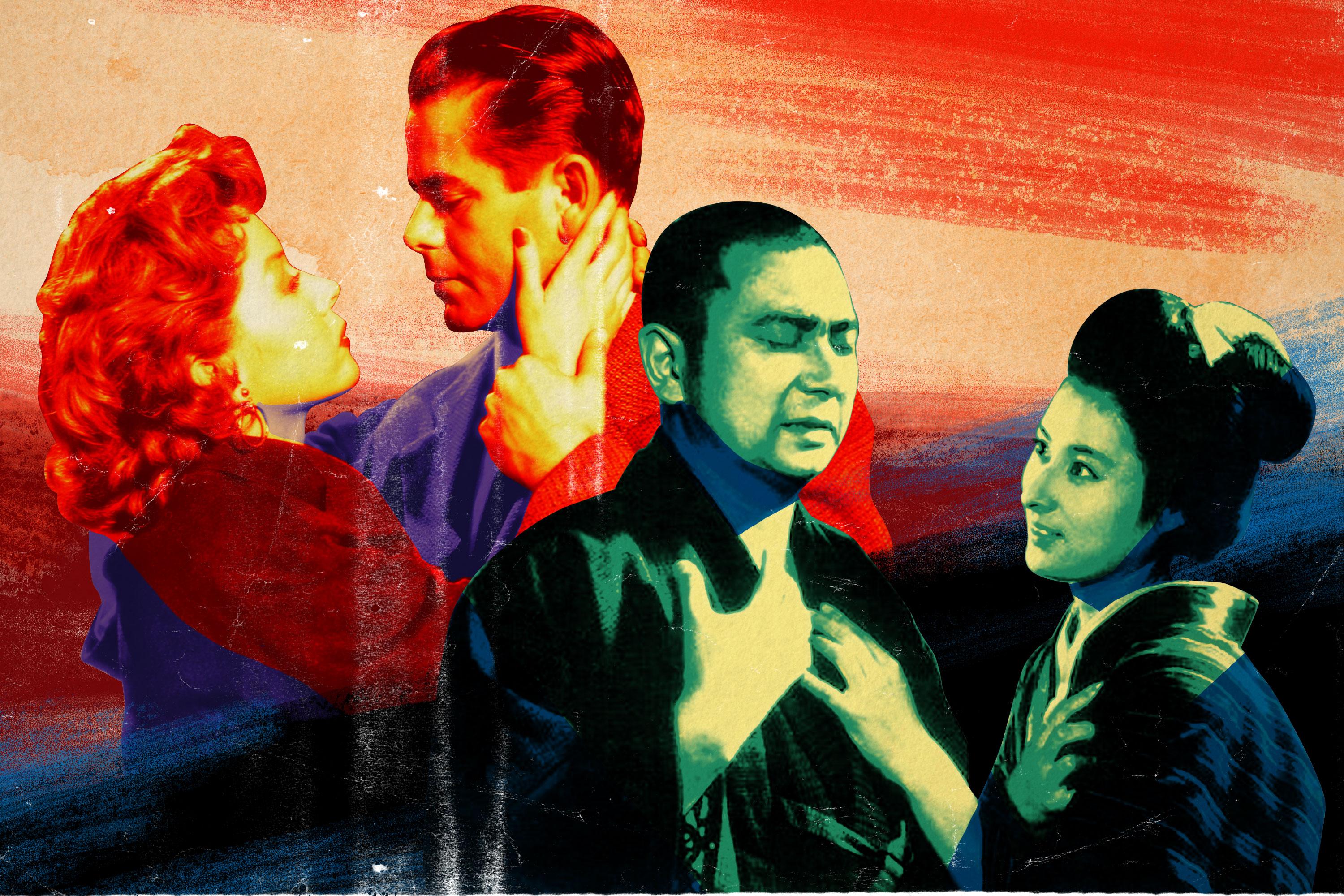The Criterion Channel Is an Idyllic Oasis Amid a Sea of Streaming-Service Sameness
The Criterion Collection’s vast library of classic films has returned to the internet after a months-long hiatus. You don’t have to be a cinephile to appreciate its offerings—think of them as more intense versions of the entertainment you already like, the couture originals of the big streamers’ ready-to-wear lines.
Look, I’m not going to do a whole fancy-pants cinephile thing here. I’m not wearing a turtleneck. I’m not smoking a Gauloises. I’m here to review the Criterion Channel, the new streaming service from the Criterion Collection that debuted this week, and since the Criterion Collection is a legendary curator/restorer/distributor of classic and foreign films, you might get the idea that I’m about to idly finger the stem of my elderflower martini glass while drawling, “it’s a common misconception that Eisenstein invented montage.” I’m not. I’m just here to talk about a bunch of movies I love. It’s been hard to stream them for a while, and now it’s easier, and that rules. That’s my whole argument. If you want to skip the rest of this column and watch The Spirit of the Beehive with your new Criterion subscription, do so, and God bless. Maybe just leave this page open for a few seconds in your browser window so the algorithm thinks my engagement metrics are holding.
The backstory behind the Criterion Channel is that there used to be a service called FilmStruck, launched in 2016, which offered movies from the Criterion Collection and Turner Classic Movies. This seemed … fine? Well, for me, it was frustrating at first, because I had a Roku at the time, and FilmStruck didn’t roll out a Roku app until months after the service launched on Apple TV. But then it did, and for a few months, life was grand. There was a rotating library of Criterion movies (colossi like The Seventh Seal, 8 1/2, and The 400 Blows, as well as other classics of world cinema that aren’t even integer-based) alongside really great curated series with introductions and conversations featuring living human beings who knew what they were talking about. You could watch the Japanese film Battles Without Honor and Humanity in the context of other ’70s yakuza movies. You could dial up a doubleheader of Hong Kong director Johnnie To and spend a Sunday watching Triad enforcers getting knocked off in a mall. There was tons of weird, beautiful, dumb, and ingenious stuff, and while it didn’t exactly keep you abreast of “the conversation,” the thing about chasing the conversation is that it’s a boring way to do unpaid work for Netflix.
Anyway, if you like movies that predate The Godfather (me: yes) and movies that weren’t made in the U.S. (yes again), FilmStruck was great. Then WarnerMedia killed it last November. It was never entirely clear why. The service didn’t appear to be losing a lot of money. Could it have cost a lot of money in the first place, licensing old screwball comedies? All the corporate language around the closure was kind of “eh, this is just what we’re doing, idk.” A lot of prominent Hollywood people signed a letter asking Warner to reverse its decision. But if the history of Firefly, Terriers, and every website I’ve ever worked for except this one has taught us anything, it’s that giant media companies may grow daffodils by accident, but they kill them on purpose.
So for the last five months, the Criterion Collection has had no online home at all. For me, this was frustrating, because at the time of FilmStruck’s demise I was 15 installments into the 26-film Zatoichi saga, and I really wanted to finish it. Have you seen any of these? They’re about a blind masseur in Edo-period Japan who improbably happens to be the greatest swordsman of his era. They are even more fun than that sounds. I embarked on the series so long ago that I started out watching on Hulu, which, long, long ago, in the time before time (2016), used to be the place to stream Criterion movies.
There was tons of weird, beautiful, dumb, and ingenious stuff, and while it didn’t exactly keep you abreast of “the conversation,” the thing about chasing the conversation is that it’s a boring way to do unpaid work for Netflix.
Which is telling in itself, isn’t it? I mean, there was a moment when it seemed like the internet would be a godsend for niche, artsy, experimental, and old movies. Remember when it was going to put all of culture in the palm of your hand? Back when Netflix was still a DVD-by-mail service, there was a notion that we were progressing inexorably toward a future where everything would be accessible from everywhere, and everyone would choose their cultural interests from technology’s decentralized, unregulated storehouse. Flash-forward to 2019, and what we have instead is something like an extremely rapid succession of short-term monocultures. Filmed entertainment that isn’t the vertically integrated product of a data-driven audience-targeting strategy has no chance to find an audience. Most filmed entertainment that is finds an audience for 72 hours, at which point everyone forgets it and moves on to search for memes in the next not-unwatchable product. Enjoying something like the Zatoichi films—to say nothing of, you know, many of the best movies ever made—means jumping from one subscription service to another as these films try to find a haven in a media economy that treats art primarily as a loss leader.
The good news is that the Criterion Channel is great. I guess people will find points to criticize, but like … you can watch Fanny and Alexander, A Brighter Summer’s Day, Amarcord, Blood Simple, and Mulholland Dr. in one place. For $11 a month! Do you really want me to complain? On my Apple TV, the app is still pretty bare bones, but I don’t mind that—Criterion was up-front about the fact that it was trying to get the service launched as quickly as possible, which was the right approach in this case. Search-and-navigation functionality will improve over time. And the movies play smoothly (not always a given with FilmStruck) and look fantastic. The first one I watched was the Senegalese director Djibril Diop Mambéty’s classic Touki Bouki, a surreal-leaning exploration of 1973 Dakar in which color is used to hypnotic effect; I can report that I felt like I could see through time by about the 30-minute mark.
Since then, I’ve been making my way through a curated collection of films noirs produced by Columbia Pictures: My Name Is Julia Ross (1945, a woman is kidnapped, taken to a manor house on the Cornish coast, and made to believe she’s someone else); The Big Heat (1953, an impossibly young Lee Marvin as a coffee-throwing psychopath) and Murder by Contract (1958, very proto–Le Samouraï, a preternaturally cool assassin struggles with an assignment to kill a woman). Half of them are B-movie trash; they’re all completely great. There’s something so bracing about the start of a good film noir—the ominous blare from the orchestra, the elongated cursive of the title—that I’m tempted to say the opening credits are worth the price of the subscription even without the movies to which they’re attached.
So that’s my review of the Criterion Channel. Four of four stars, please mash that subscribe button. And I don’t mean subscribe as some philanthropic act. I mean for your own selfish pleasure. The service will inevitably be branded as highbrow, and that’s not entirely unfair; after all, you can watch La Jetée here if you want to (and you should, it’s fascinating). What you’ll mostly find, though, are more intense versions of whatever you already like, the couture originals of the big streamers’ ready-to-wear lines. If you like violence, you’ll find violence as viscerally thrilling and disturbing as any on film; if you like comedy, you’ll find comedy as sparkling and funny; if you like unflinching dissections of the existential hopelessness of life in the universe—well, Netflix does have a new Ricky Gervais show, so I can’t promise anything darker than that. The point is, there’s something here for you. Just about the only thing you won’t find is many TV series, which could be a dealbreaker for you in our series-focused times. Most TV series are pretty bloated these days, though. Maybe just push pause for 15 seconds in the middle of the movie and say you’re “bingeing Episode 2.”

